India’s top-ranked CO-ED day schools 2025-26
It’s an indicator that K-12 education in India is progressing in the right direction that the league table of Day co-ed schools has been the lengthiest in the annual EducationWorld India School Rankings since they were introduced in 2007. In EWISR 2025-26 the co-ed day schools league tables stretch to over 150 printed pages

In terms of learning outcomes of children, post-independence India’s K-12 education system has been a disappointment with over 50 percent of children, in class VII of rural primaries unable to read class III textbooks or solve simple division and multiplication sums. Yet one positive feature is that the great majority of the country’s 1.40 million primary-secondary schools are mixed gender, aka co-ed, institutions. Although single gender boys and girls schools continue to provide K-12 education to children from conservative and religious households, almost all 1.10 million government schools and the majority of private schools host mixed gender classrooms.
This is a progressive, nation-building development because when children start learning together from young age, male children in particular, learn the virtues of empathy, respect and gender egalitarianism from their early years. Moreover when girl children learn in co-ed classrooms, they are better equipped and more likely to participate in the labour force and engage in nation-building work outside their homes.
That the league table of Day co-ed schools is the lengthiest in the annual EducationWorld India School Rankings (EWISR) since they were introduced in 2007 is an indicator that K-12 education is advancing in the right direction. In EWISR 2025-26 which ranks the country’s most well-reputed schools in three umbrella categories — Day, Boarding, International — and in 14 sub-categories (e.g, Day co-ed, boys and girls) to provide a level playing field for ranked schools by eliminating apples and oranges type comparisons, over 3,000 Co-ed Day schools are ranked nationally, in the states and cities.
In this edition of EducationWorld, the co-ed day schools national (restricted to Top 100 schools), state and city league tables stretch to over 150 printed pages! However, it’s important for parents searching for the most suitable schools for their children to bear in mind that for day schools, national rank is of limited value, and that city/town rankings are of greater import because of ease of access. National rankings are important, but mainly for boarding, day-cum-boarding and residential education institutions and for providing the important stimulus of continuous improvement and countrywide benchmarking. For day scholars town and city rankings are of prime importance (see p.52).
In this year’s national league table of over 3,000 of India’s most reputed co-ed day schools (for full table see www.educationworld.in), there has been considerable churn for two main reasons. First because our more professional research agency, the Bangalore-based AZ Research Partners — appointed last year after termination of our association with C fore — has drawn up a broader respondents’ database. Until 2024, sample respondents were drawn from SEC (socio-economic category) ‘A’ — upper middle and elite classes in terms of income and social status. However from last year onwards the sample respondents database is more broad-based, a mix of SEC ‘A’ and SEC ‘B’ respondents.
Secondly, because for this year’s survey we have promoted some schools repeatedly ranked in the Top 10 to a new Ivy League category. This initiative has been driven by the need to spare readers the tedium and deja vu of witnessing the same institutions topping the Co-ed day (and other) league tables year after year. And also to provide opportunity to other schools to advance higher in EW league tables. Therefore, there’s considerable rearrangement of seating in the national, states and city league tables of co-ed day schools.
Against this backdrop, this year’s 9,500 sample respondents have awarded the biggest promotion to the highly respected The Shri Ram School, Vasant Vihar/Moulsari, Delhi (TSRS, estb.1988) which dominated the EW India School Rankings in the early years after the annual EWISR was launched as the country’s first never-before primary-secondary schools ranking survey in 2007. However in recent years perhaps because of institutional complacency and negligible image projection, TSRS — although invariably ranked among the Top 10 — had fallen out of favour with sample respondents. Nevertheless the sample respondents database constituted for 2025-26 has given the almost-impossible-to get- into TSRS a huge promotion to India #1 (from #7 in 2024-25) with highest scores under seven of the 14 parameters of school education excellence.
Regrettably and surprisingly, despite numerous phone calls and digital messages, Manika Sharma, Director of TSRS — declined to respond for a celebratory interview and share the secrets of success of India’s top-ranked Co-ed day school for the benefit of the larger schools community. Presumably lulled into complacency by the huge applications to admissions ratio (reportedly 100:1), Sharma believes that TSRS doesn’t need the oxygen of publicity.
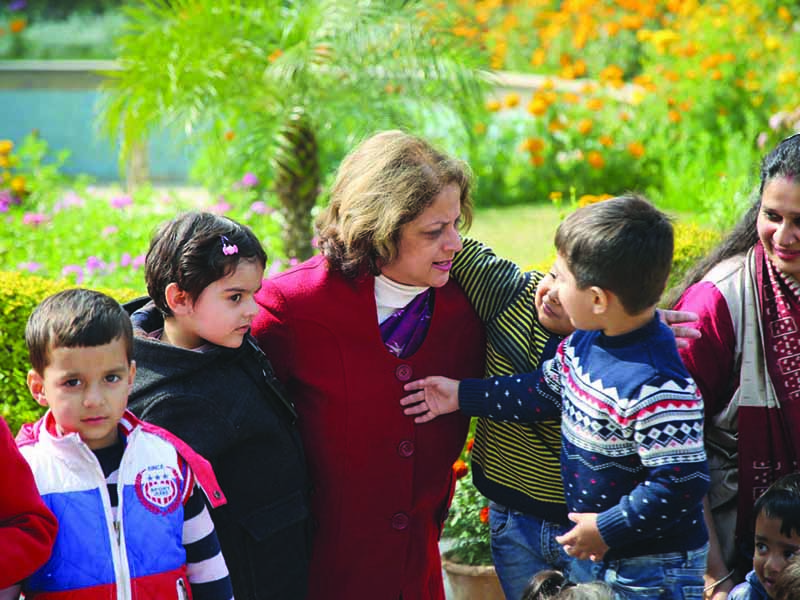
Suncity, Gurugram’s Rupa Chakravarty: professional development fallout
It’s submitted that such complacency is myopic and not in the interest of the school. High rank in the annual EWISR — which over the past two decades of uninterrupted publication has evolved into the world’s largest and most comprehensive schools ranking survey — is important because it also attracts high quality teachers and alumni and public endowments for infrastructure upgradation as also for winning public (including official) goodwill. In the circumstances Sharma’s dogged refusal to respond to repeated pleas for a 10 minute interview with the country’s indisputably #1 education publication is a damaging self-goal and sets a negative example of bad manners and unwarranted hubris to TSRS students.
Be that as it may, in the massive 3,000 schools-plus 2025-26 league table of India’s most respected co-ed day schools, there’s been a minor re-arrangement of the seating order at top table. The routinely high ranked Smt. Sulochanadevi Singhania School, Thane (hitherto a suburb of Mumbai) is promoted to #2 (cf.3 in 2024-25); Shiv Nadar School, Gurugram to #3 (4); Suncity School, Gurugram to #4 (5); with Nirmal Bhartia, Delhi to #5 (6) completing the top table.
Rupa Chakravarty, the erudite and experienced Founding-Principal of Suncity School, Gurugram (SSG, promoted in 2006 by the media and energy corporate heavyweight Essel Group) is very pleased with the steady rise of SSG in the annual EWISR league tables. Ranked #17 in 2022, #15 in 2023 and #5 last year, it is ranked #4 in 2025-26 with high scores under seven of 14 parameters of school education excellence.
“Continuous promotion by different sets of sample respondents every year is strong endorsement and validation of the innovative beyond-the-curriculum education rooted in sanskar (Indian values) that we provide our children in SSG,” says Chakravarty, a botany and English postgraduate of Calcutta University with leadership diplomas from IIM-Ahmedabad, Harvard and Birmingham universities who acquired several decades of teaching and admin experience in Dunlop English, Kolkata and Lakshmipat Singhania, Udaipur schools prior to being appointed Founding-Principal of SSG by Essel Group’s Chandra brothers in 2005.
Chakravarty is especially elated about by SSG’s high score under the parameter of teacher welfare and development “which is the source of several downstream benefits”. “We invest considerable resources — time and money — in enlisting our teachers in intensive teacher training programmes in India and often abroad. Moreover our teachers are encouraged to engage in research activities and to ideate new pedagogies and practices. This explains our high score under the parameter of competence of faculty and academic reputation. For your information several national toppers in this year’s CBSE school-leaving exams were SSG students. Academic learning is balanced with strong emphasis on co-curricular and sports education. The outcome of holistic education provided is that our children learn joyfully as indicated by our top score under the mental and emotional wellbeing parameter,” says Chakravarty. Currently SSG with four branch campuses in Gurugram has 4,500 students mentored by 400 teachers on its muster rolls.
Further down the Top 10 table as well there’s been a rearrangement of seating order. Vidyashilp Academy, Bangalore is ranked #6 (5), followed by the Krishnamurty Foundation’s KFI School Adyar awarded a big promotion to #6 (9); Springdales, Dhaula Kuan, Delhi is co- ranked #7 (7) with Step by Step, Noida (5); Suchitra Academy, Hyderabad continues its ascent at #8 (9) followed by Lakshmipat Singhania Adademy, Kolkata #9 (10) and Delhi Public School, Bangalore North awarded a huge promotion from #20 to #10 in 2025-26, jointly ranked with Sardar Patel Vidyalaya, Delhi (8) to complete the Top 10 table.
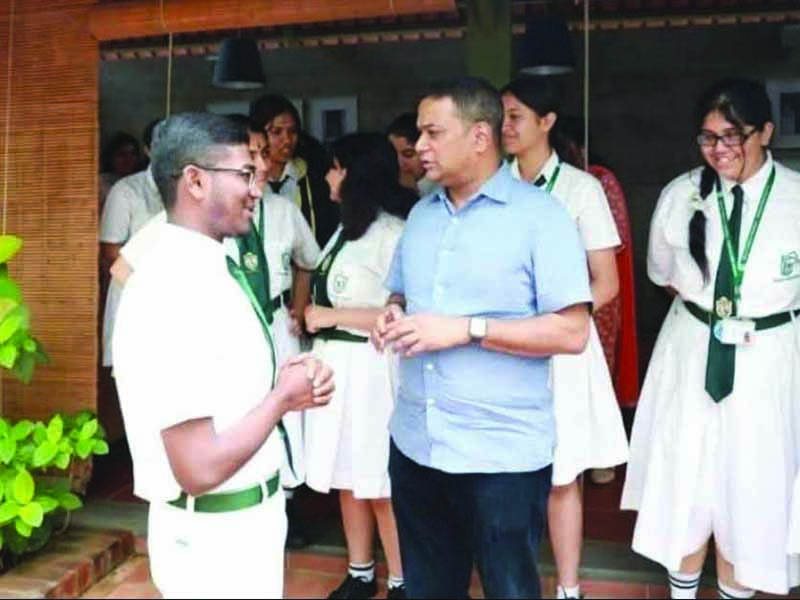
DPS, Bangalore North’s Mansoor Khan: promotion stimulus
“The annual EWISR of the highly-reputed EducationWorld is taken very seriously by all schools in Bangalore. Therefore all of us in DPS, North — and other DPS schools in the garden city — are delighted with the big promotion given to us from #20 last year to #10 in 2025-26 which places us in the national Top 10. It’s welcome news and a stimulus to keep improving under all parameters. Right from start, our intent has always been to provide high quality K-12 education at affordable price. So it’s very encouraging that we have been awarded high scores for teacher welfare and development which has translated into high scores under academic reputation and curriculum and pedagogy with digital readiness. The latter is a very important parameter because in the new digital and AI age, the education ecosystem worldwide is evolving very fast. Therefore we have invested huge resources to keep our curriculum and pedagogies updated and ensuring our classrooms are fully wired and digitally connected. I’m also pleased about our good scores under the parameters of parental involvement and leadership. We believe that parents are our best brand ambassadors and our teachers are carefully selected for leadership positions because we plan for all our schools to evolve over the next 100 years,” says Mansoor Khan, a business management postgrad of Bangalore University and Promoter-Director of seven DPS schools – including DPS, North – in Bangalore with an aggregate 32,000 students and 3,500 teachers on their muster rolls.
Beyond the India Top 10, further down the Top 20 league table, among schools that have been awarded notable promotions by this year’s sample respondents are: DPS, Sector 45, Gurugram to #14 (19); DPS, Bopal, Ahmedabad #15 (29); JBCN International, Borivali, Mumbai #16 (41); Chennai Public School, Anna Nagar #18 (26); Venkateshwara Global, Rohini, Delhi #18 (26) Shalom Hills International, Gurugram #20 (32); Shiv Nadar School, Noida #20 (35).
When assessing the relative merits of day schools – including co-ed day schools – it’s important to bear in mind that city and state rankings (provided by EW ab initio) are more relevant and utilitarian than national rankings. Because day scholars are obliged to strive for admission into the best schools in their host cities. National rankings of day schools are of interest only for the tiny minority of parents not averse to displacing their progeny away from home and hearth to boarding or day-cum-boarding schools in near and far cities and habitats. Therefore it’s pertinent to note that a large number of day schools that are modestly ranked in national league tables are top ranked in their states and host cities.
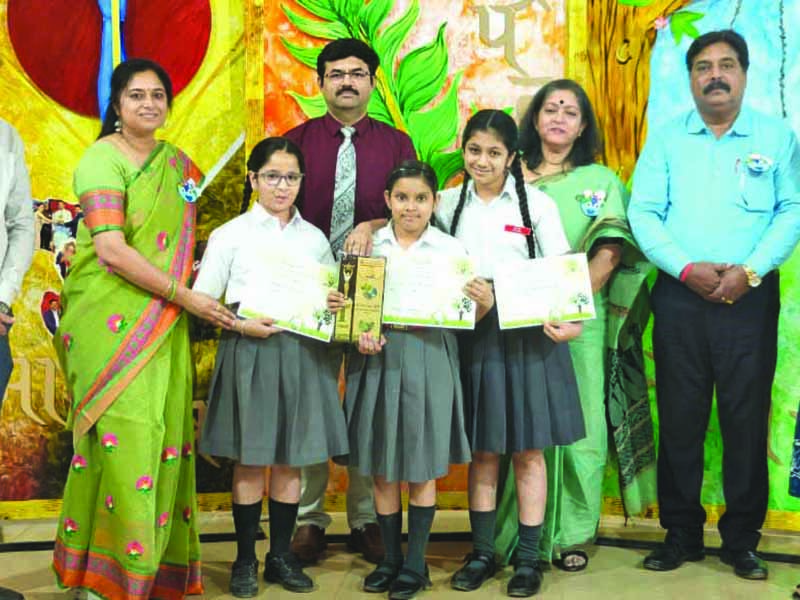
SAJS-K’s Tiwari (centre): #1 in India’s most populous state
For instance Seth Anandram Jaipuria School, Kanpur (SAJS -K, estb.1974), ranked India #32 is #1 in Uttar Pradesh (pop. 220 million) and in the bustling city of Kanpur (pop. 4 million). Unsurprisingly, Ganesh Tiwari, a physics and education postgrad of the Rani Durgabati University, Jabalpur who acquired several decades of invaluable teaching and admin experience with numerous primary-secondaries including the globally-benchmarked Genesis Global School, Noida (2011-23) prior to being head-hunted and appointed principal of SAJS-K last April, is delighted that this school sited on an expansive nine-acre campus in the heart of Kanpur is ranked #1 in Uttar Pradesh “which if it were an independent country would be the fifth most populous worldwide”.
“This is excellent news, which I am excited to share with all SJAS-K stakeholders. There are several high-quality schools in UP which don’t get high national ranking because of misleading media portrayal of UP, and competition between us is intense. Therefore top rank in India’s most populous state is an achievement of which we are proud. I am especially pleased with our good score under the parameter of teacher welfare and development — a high priority in SJAS-K — which has translated into a high score under teacher competence. I’m also pleased with our good score under sports education and mental and emotional wellbeing services. This is proof that we are providing our children well-designed holistic education — a balanced mix of academics and sports which results in the mental and emotional wellbeing of children,” says Tiwari who modestly attributes the school’s good score under the leadership parameter to the “excellent institutional management” of his predecessor in office Shikha Banerjee who served as principal of SJAS-K for six years.
Beyond the Top 30 in the 2025-26 league table of India’s Top 100 co-ed day schools featured in the EW print edition (for schools ranked below 100 nationally visit our website www.educationworld.in) several schools countrywide have been awarded big promotions by this year’s 9,500 sample respondents.
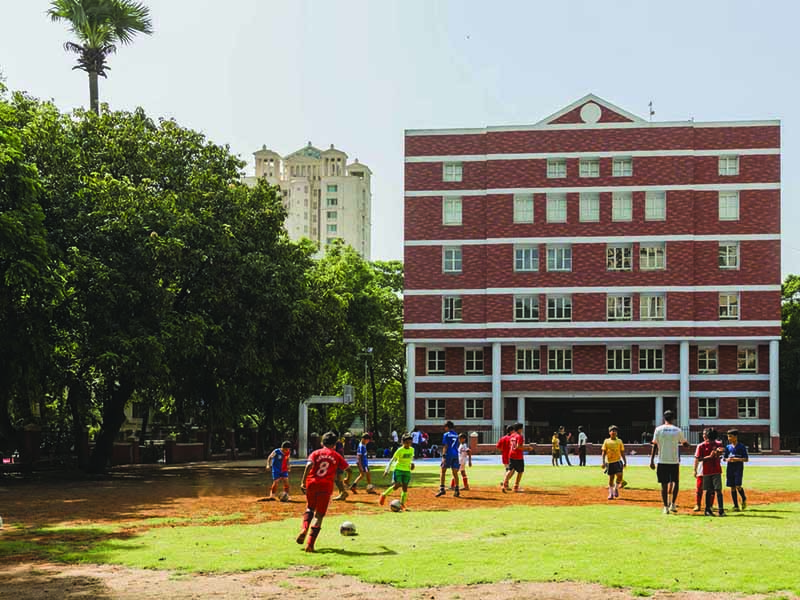
Hiranandani Foundation School Powai (Mumbai): big promotion
Among them: Hiranandani Foundation School Powai, Mumbai ranked #37 (cf. 61 in 2024-25); Navarachna School, Vadodra #40 (57); Ryan International, Rohini, Delhi #40 (60) and Vidya Jain Public School, Sector 6 Rohini, Delhi #40 (65); Mata Jai Kaur Public School, Ashok Vihar, Delhi #43 (63).
Principals, parents and stakeholders of schools ranked below 100 — it’s impossible to include the ratings and ranking of all 3,000 schools assessed in EWISR 2025-26 in this print edition — are advised to visit our website to ascertain their national rank and detailed scores under all parameters of school education excellence. You may experience some pleasant surprises.







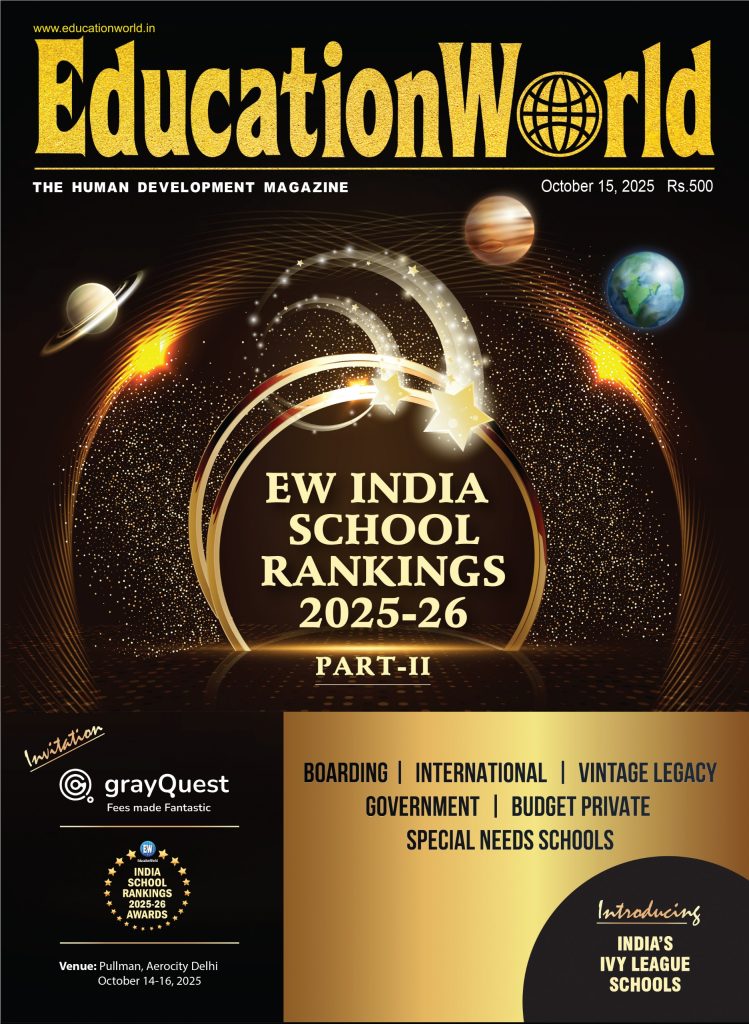
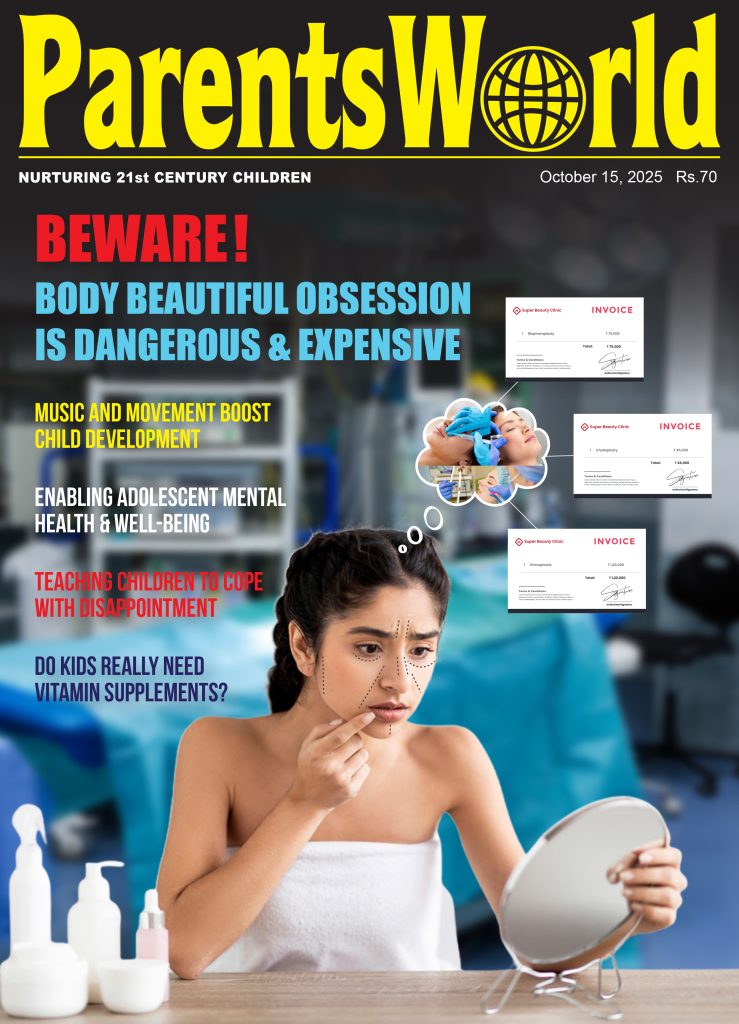



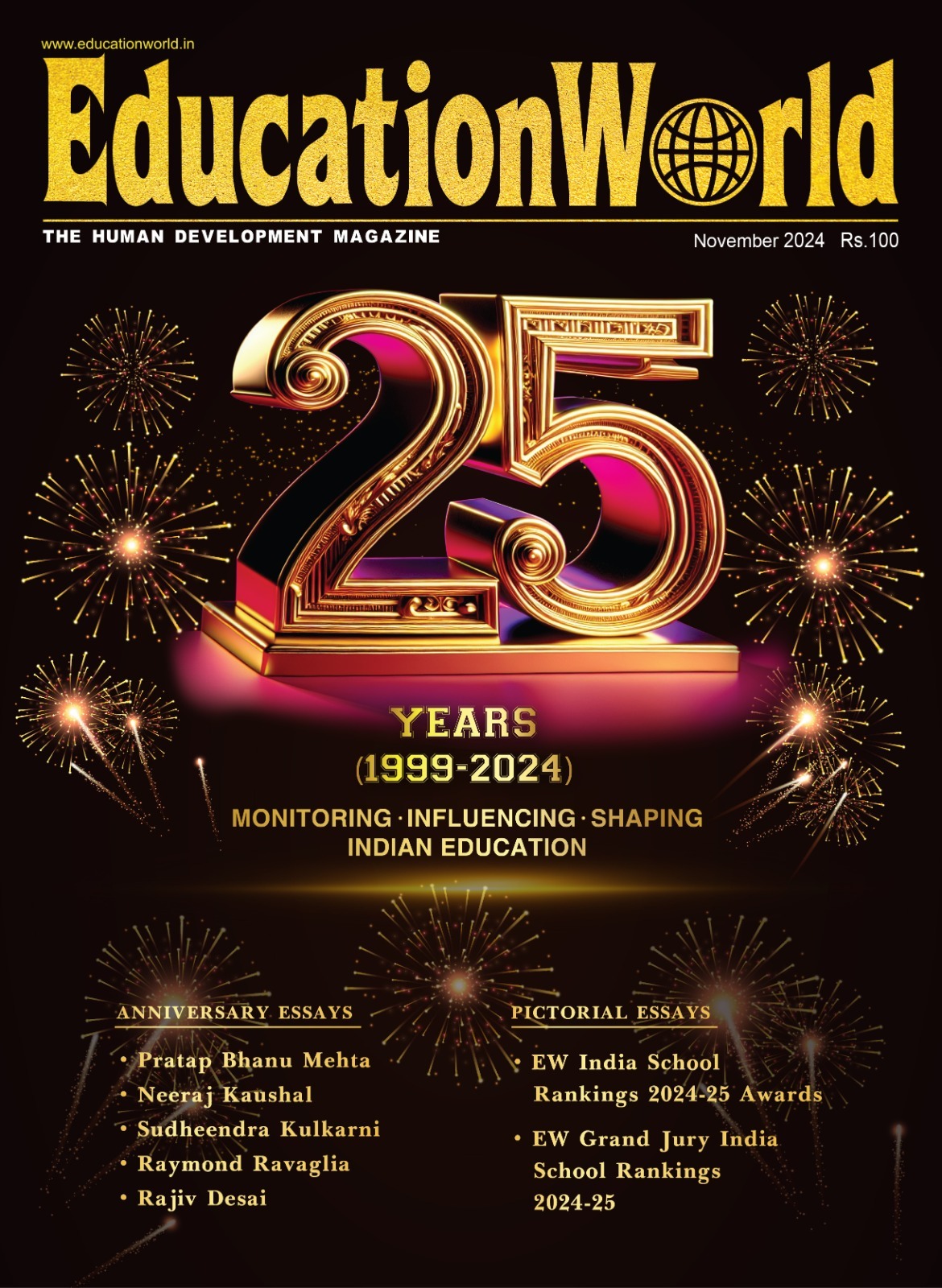



Add comment